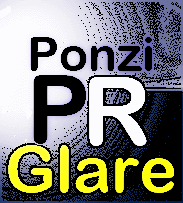Millions Of Dollars In Payments To Accountant, 73, Provided Him ‘Powerful Incentive’ To Look The Other Way As Joseph Forte Pulled Off $75 Million Ponzi Scheme, SEC Says
 Joseph S. Forte, one of the earliest of the so-called mini-Madoffs, was sentenced in November 2009 to 15 years in federal prison — slightly more than a year in jail for each year his 13-year scheme operated. The SEC now says he had help from an accountant who looked the other way because Forte, a failed computer salesman, became a cash cow when he reimagined himself as an investment strategist in 1995.
Joseph S. Forte, one of the earliest of the so-called mini-Madoffs, was sentenced in November 2009 to 15 years in federal prison — slightly more than a year in jail for each year his 13-year scheme operated. The SEC now says he had help from an accountant who looked the other way because Forte, a failed computer salesman, became a cash cow when he reimagined himself as an investment strategist in 1995.
John N. Irwin, 73, of Villanova, Pa., presided over a consulting firm known as Jacklin Associates Inc. , the SEC said.
Both Irwin and the firm solicited business for Forte, and Irwin racked up more than $5 million in ill-gotten gains after performing no “due diligence” and relying “exclusively on Forte’s misrepresentations about Forte LP’s stellar performance,” the SEC said.
Forte had been running a Ponzi scheme between 1996 and 2008, according to the U.S. Postal Inspection Service. The scheme ultimately gathered more than $75 million, and Forte simply made up profitability numbers to hoodwink investors.
Just prior to the collapse of the scheme in late 2008, according to postal inspectors, Forte told investors his fund had a total value of more than $154 million, but the fund’s actual value was $150,000 — and Forte kept collecting money from customers.
In a settlement with the SEC, Irwin and Jacklin neither admitted nor denied the allegations. The financial aspects of the settlement, which requires judicial approval, will be determined later, the SEC said.
Irwin has been suspended from appearing before the SEC as an accountant.
“In communicating the fraudulent information to investors, Irwin disregarded red flags that should have alerted him that the information that he was passing on was false,” the SEC said.
“Irwin had a powerful incentive to disregard those red flags,” the SEC charged, “because Forte paid him and Jacklin millions of dollars in the form of purported trading profits and fees.”
During the course of the Forte scheme Irwin was both an investor in Forte’s limited partnership and a provider of accounting services to Forte, the SEC said.
What red flags were missed?
“[F]or approximately four and a half years, between October 2002 and February 2007, Forte did not deposit any investor funds into the trading account of Forte LP, and from October 2004 through July 2007, Forte conducted minimal trading in the account,” the SEC charged.
“Rather, Forte diverted most of investor funds to meet redemption requests of other investors in Forte LP, to pay fees to himself and Jacklin, for personal use and the use of his family and friends, and to various third parties as donations or otherwise.”
Irwin also overlooked red flags pertaining to Forte’s treatment of tax matters, the SEC alleged.
“[F]rom 1995 through 2002, Forte provided Irwin with false investment account documents that purported to be 1099 forms from Forte LP’ s brokerage firm,” the SEC charged. “Each of the forms appeared on its face to have been altered or fabricated. In 2003, Forte stopped sending Irwin the 1099 forms as year-end support for the numbers he was reporting. However, despite Irwin’s considerable accounting experience, he failed to request the documents from the institutions themselves.”
Forte’s “exclusive control” over the firm’s brokerage and bank accounts and the “consistently large gains reported by Forte every year” also sent up red flags that Irwin ignored, the SEC charged.
Forte became a CPA in 1961, the same year President Obama was born.
“Given Irwin’s significant experience as an accountant, investor, and businessman, and his active role in Forte LP, he should have been skeptical of Forte’s reports of consistently large trading profits in the trading of futures over a period of thirteen years, and should have independently verified the same before communicating with investors,” the SEC charged.